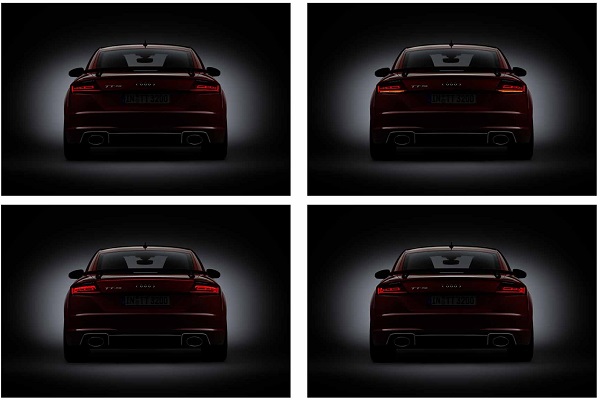The new rear lights for the new Audi TT RS feature OLEDs (Organic Light Emitting Diode) from lighting manufacturer Osram – currently the only company to offer this innovative lighting technology for automotive applications. The organic area light sources are highly flexible and enable innovative design solutions for the automotive sector. “We are delighted that our OLEDs in the new Audi TT RS are now used in a large volume production vehicle,” said Hans-Joachim Schwabe, CEO Specialty Lighting at Osram, describing the lighting manufacturer’s pioneering role in the OLED business.
 |
|
Audi TT RS feature OLED taillights from Osram. (All photos courtesy of Audi AG) |
As a technology and innovation leader for automotive lighting solutions, Osram is now also providing its OLED lighting for the new Audi TT RS. The linear organic light emitting diodes in the rear light on the production vehicle emphasize the flatness of the light source and act as a design highlight, particularly when viewed slightly from the side. Splitting the OLEDs into three individually controllable lighting segments – two outer and one inner segment – allows for different lighting functions to be combined. The outer segments are illuminated permanently to support the rear light functions, whereas the inner segment is added when braking. What’s more, dynamic animations for opening and closing the vehicle known as coming/leaving home scenarios can also be implemented. Apart from their innovative design, which was adapted to the styling of the lights to suit specific customer requirements, the new rear lights also offer impressive functionality. A total of four OLEDs with a total light-emitting area of 49 cm2 and a brightness of 1,000 cd/m2 are mounted as a module on a holder with a mirrored bezel, guaranteeing optimum visibility on the road.
 |
|
The linear organic light emitting diodes in the rear light on the production vehicle emphasize the flatness of the light source and act as a design highlight, particularly when viewed slightly from the side. |
Flexible lighting technology of the future
The thin layers of an OLED contain organic materials. They are enclosed by flat electrodes which serve as the electrical contacts. When power is supplied, photons are produced in the layers, causing the diode to emit light. Since OLEDs produce light in very thin layers they are ideal for flexible lighting solutions. For example, 3D shadow effects can be created by segmentation, in other words the close arrangement of switchable light surfaces next to one another. The possibility of controlling individual light modules separately opens up even more design options such as dynamic functionality. In addition to offering enormous flexibility of design, OLED technology consumes very little energy, which is of great benefit in the automotive industry.
 |
|
The organic area light sources are highly flexible and enable innovative design solutions for the automotive sector.
|














